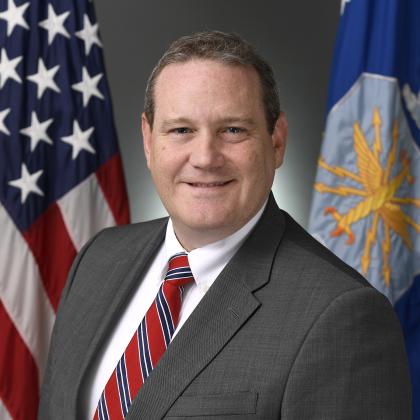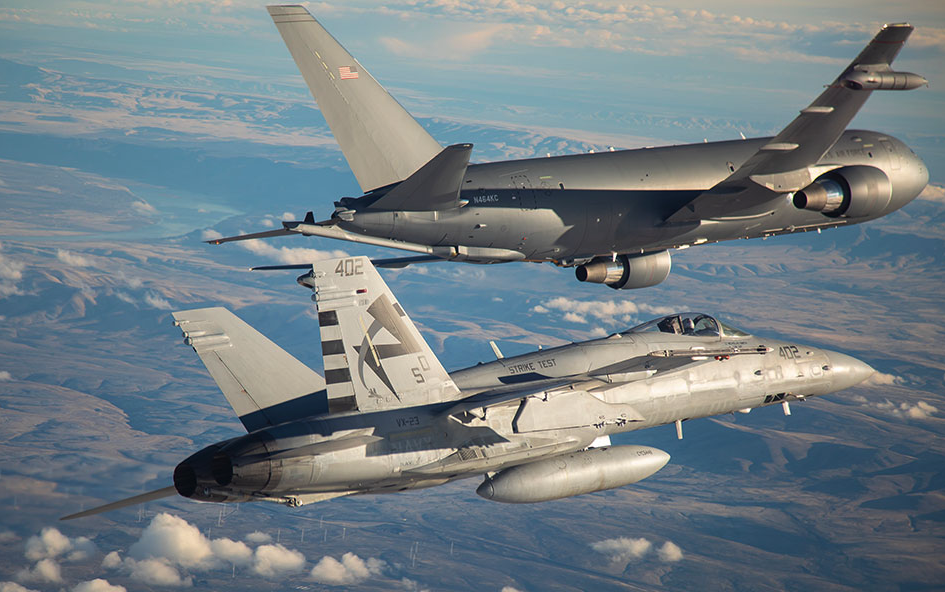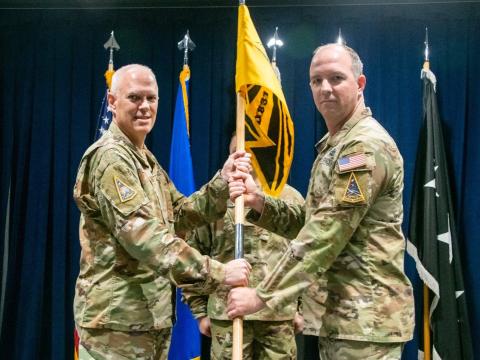Air Force Unveils New Tanker Aircraft and Systems Plan
The U.S. Air Force is scrapping a plan for fielding tanking systems and aircraft. Given the expected near-peer threat environment, the service will design new, more resilient assets for tanking. Instead of pursuing the planned KC-46 aircraft variations X, Y and Z, the Air Force is introducing a Next Generation Aerial Refueling Systems (NGAS) program that will field capabilities in the mid- to late- 2030s, reported Andrew Hunter, Senior Executive Service, assistant secretary of the Air Force for Acquisition, Technology and Logistics.
Hunter spoke to reporters March 6 during the Air and Space Forces Association’s Warfare Symposium, being held this week virtually and in person in Colorado Springs, Colorado.
“We have come to the determination that kind of KC-46 X, Y, Z strategy that was established in 2009-2010 timeframe is no longer fit for purpose in meeting the needs of the joint force in the 2030s and beyond,” Hunter explained. “We have a new approach or a new plan for how we're going to do tanker recapitalization and do tanker modernization. We're going to be establishing a program called Next Generation Aerial Refueling Systems, NGAS for short, which is a program focused on ensuring that the tanker capabilities 2030s and beyond will be able to survive and operate in a much more contested environment than the tankers of the past or the tankers that are in our current fleet.”
The Air Force is requesting funding for NGAS in its forthcoming fiscal year 2024 budget—expected to be out in the next week and a half, Hunter shared.
The threats to high-value U.S. aircraft—including tankers and related systems—posed by potential adversaries require the service to “have an approach that allows us to address those threats,” the acquisition leader noted.
Specifically, the Air Force wants tankers and systems that can “go deeper into contested airspace, have more advanced self protection-toe capabilities and more advanced networking capabilities,” Hunter stated. “That initial KC-46 Y requirement was a step in that direction, but it wasn't a progression all the way to those kinds of capabilities. There's a lot of other things that we'll be able to talk about more when the FY24 budget comes out in terms of new capabilities between the Air Force and the Space Force, that these aircraft would be working in combination with.”
Once NGAS funding is secured, the service will begin by conducting an analysis of alternatives (AoA) to define the program’s desired capabilities. Hunter expects the AoA process to take 18 months to two years.
“My intent is, as we're doing that, we want to work quite closely with a wide variety of potential industry partners in order to inform our efforts and make sure that the capabilities that are being considered in the AOA are the best, the most innovative and effective options that are out there,” he emphasized. “The AOA will be a clean sheet of paper approach, not constrained to commercial derivative aircraft, but really looking at what is the capability required to operate in this environment. And my intent also is that we would establish a competitive vendor pool early on for both aircraft providers and mission system providers to really inform this work, help us plan our way ahead. NGAS will be a fully competitive program.”

We want to work quite closely with a wide variety of potential industry partners in order to inform our efforts and make sure that the capabilities that are being considered in the AOA are the best, the most innovative and effective options that are out there.
Meanwhile, the Air Force is still on track to purchase 149 KC-46 tankers in fiscal year 2027, with delivery expected in 2029. However, because the NGAS program won't start until the mid-2030s or later, the service would have at least a five-year gap in its tanker needs, Hunter said. To address that, the service plans for “a smaller buy” of about 75 KC-46 X aircraft with a delivery schedule that dovetails with the 2029 order. These stopgap tankers would involve a few “modest,” to-be-determined changes to the original design/systems.
“We think we will need about five years of tanker production from the current end of deliveries of the KC-46, to get to increment one of NGAS,” he noted. “So, going back to industry to clarify with really a KC-46 X requirement with just a few modest additions to reflect the progress forward the Air Force has made in networking and communications requirements.”
Already, the service has begun retirement of KC-135R aircraft, and the stopgap tankers would allow this process to continue.





Comments